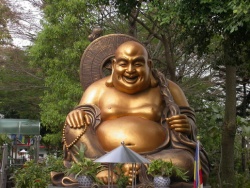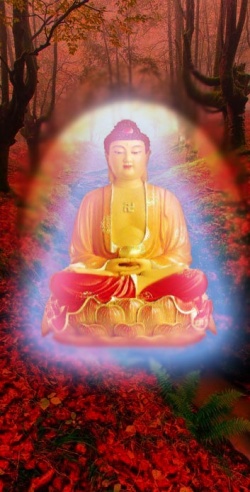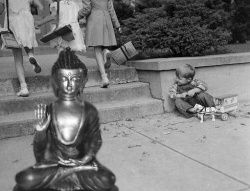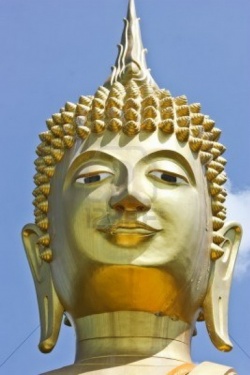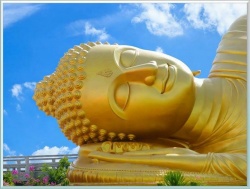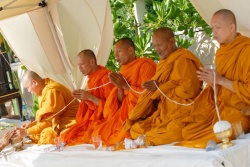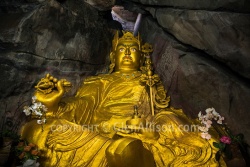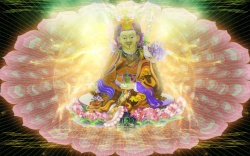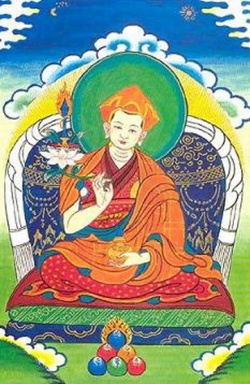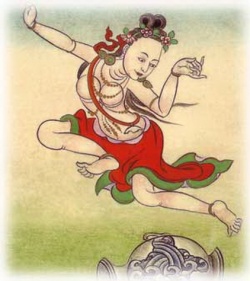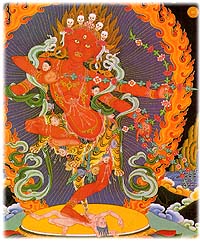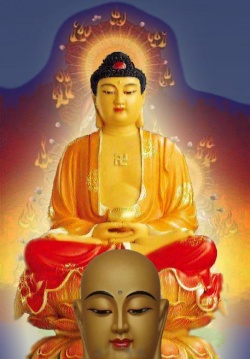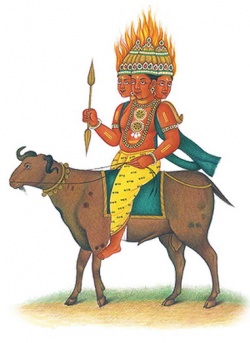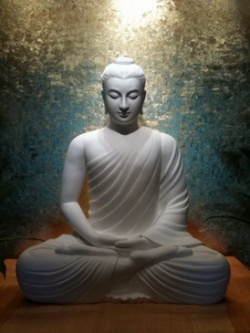Difference between revisions of "Noble Eightfold Path"
m (Text replace - "right" to "right") |
|||
| (21 intermediate revisions by 5 users not shown) | |||
| Line 1: | Line 1: | ||
| − | [[File:Dharma_Wheel.png|thumb|250px|The [[Dharmacakra|Dharma wheel]], often used to represent the | + | <noinclude>[[File:Dharma_Wheel.png|thumb|250px|The [[Dharmacakra|Dharma wheel]], often used to represent the [[Noble Eightfold Path]])]{{DisplayImages|1953|1002|636|3976|1831|4524|4446|2062|820|1846|3664|331|1202|4093|2077|2361|3063|244|3675|4413|2934|1673|389|653|4037}} |
| − | |||
| − | |||
| − | |||
| − | |||
| − | |||
| − | : In the same way I saw an ancient path, an ancient road, traveled by the Rightly Self-awakened Ones of former times. And what is that ancient path, that ancient road, traveled by the | + | |
| + | |||
| + | |||
| + | The [[Noble]] [[Eightfold Path]] ([[Pali]]: [[Ariyo aṭṭhaṅgiko maggo]], [[Sanskrit]]: [[āryāṣṭāṅgamārga]]) is one of the [[principal]] teachings of The [[Buddha]], who described it as the way leading to the [[cessation of Suffering]] ([[Dukkha]]) and the [[achievement of self-awakening]]. | ||
| + | |||
| + | |||
| + | It is used to develop [[insight]] into the [[true nature]] of [[phenomena]] (or [[reality]]) and to eradicate [[greed]], [[hatred]], and [[delusion]]. | ||
| + | |||
| + | |||
| + | The [[Noble Eightfold Path]] is [[the fourth]] of The [[Buddha]]'s [[Four Noble Truths]]; the first [[element]] of the [[Noble Eightfold Path]] is, in turn, an [[understanding]] of the [[Four Noble Truths]]. | ||
| + | |||
| + | It is also known as the [[Middle Path]] or [[Middle Way]]. | ||
| + | |||
| + | |||
| + | All [[eight elements of the Path]] begin with the [[word]] "right", which translates the [[word]] [[samyañc]] (in [[Sanskrit]]) or [[sammā]] (in [[Pāli]]). | ||
| + | |||
| + | These denote completion, togetherness, and coherence, and can also suggest the [[senses]] of "{{Wiki|perfect}}" or "{{Wiki|ideal}}". | ||
| + | |||
| + | '[[Samma]]' is also translated as '[[wholesome]]', '[[wise]]' and '[[skillful]]'. | ||
| + | |||
| + | In [[Buddhist symbolism]], the [[Noble Eightfold Path]] is often represented by means of the [[Dharma wheel]] ([[dharmachakra]]), whose eight spokes represent the [[eight elements of the path]]. | ||
| + | |||
| + | |||
| + | |||
| + | ===Origin=== | ||
| + | |||
| + | |||
| + | According to [[discourses]] found in both the [[Theravada school]]'s [[Pali canon]], and some of the [[Āgamas]] in the {{Wiki|Chinese}} [[Buddhist]] [[canon]], the [[Noble Eightfold Path]] was rediscovered by [[Gautama Buddha]] during his quest for [[Enlightenment]]. | ||
| + | |||
| + | The [[scriptures]] describe an {{Wiki|ancient}} [[path]] which has been followed and practiced by all the previous [[Buddhas]]. | ||
| + | |||
| + | The [[Noble]] [[Eightfold Path]] is a [[practice]] said to lead its [[practitioner]] toward [[self-awakening]] and [[liberation]]. | ||
| + | |||
| + | The [[path]] was [[taught]] by The [[Buddha]] to his [[disciples]] so that they, too, could follow it. | ||
| + | |||
| + | : In the same way I saw an {{Wiki|ancient}} [[path]], an {{Wiki|ancient}} road, traveled by the [[Rightly Self-awakened Ones]] of former times. | ||
| + | |||
| + | And what is that {{Wiki|ancient}} [[path]], that {{Wiki|ancient}} road, traveled by the [[Rightly Self-awakened Ones]] of former times? Just this [[noble Eightfold Path]]: | ||
| + | |||
| + | [[right view]], | ||
| + | |||
| + | [[right aspiration]], | ||
| + | |||
| + | [[right speech]], | ||
| + | |||
| + | [[right action]], | ||
| + | |||
| + | [[right livelihood]], | ||
| + | |||
| + | [[right effort]], | ||
| + | |||
| + | [[right Mindfulness]], | ||
| + | |||
| + | [[right concentration]]... | ||
| + | |||
| + | |||
| + | I followed that [[path]]. Following it, I came to; | ||
| + | |||
| + | direct [[knowledge]] of [[aging]] & [[death]], | ||
| + | |||
| + | direct [[knowledge]] of the origination of [[aging]] & [[death]], | ||
| + | |||
| + | direct [[knowledge]] of the [[cessation]] of [[aging]] & [[death]], | ||
| + | |||
| + | direct [[knowledge]] of the [[path]] leading to the [[cessation]] of [[aging]] & [[death]]... | ||
| + | |||
| + | [[Knowing]] that directly, I have revealed it to [[monks]], [[nuns]], {{Wiki|male}} lay followers & {{Wiki|female}} lay followers... | ||
:: —[[Nagara Sutta]] | :: —[[Nagara Sutta]] | ||
| − | The practice of the [[Noble]] [[Eightfold Path]] varies from one [[Buddhist]] school to another. Depending on the school, it may be practiced as a whole, only in part, or it may have been modified. Each [[Buddhist | + | |
| + | The [[practice]] of the [[Noble]] [[Eightfold Path]] varies from one [[Buddhist]] school to another. | ||
| + | |||
| + | Depending on the school, it may be practiced as a whole, only in part, or it may have been modified. Each [[Buddhist lineage]] implements the [[path]] in the [[manner]] most conducive to the [[development]] of the students drawn to that [[lineage]]. | ||
[[File:Yun41.JPG|thumb|250px|]] | [[File:Yun41.JPG|thumb|250px|]] | ||
| − | Additionally, some sources give alternate definitions for the | + | Additionally, some sources give alternate definitions for the [[Noble Eightfold Path]]. |
| + | |||
| + | The [[Ekottara Āgama]] in particular contains variant teachings of basic [[doctrines]] such as the [[Noble Eightfold Path]], which are different from those found in the [[Pali Canon]]. | ||
| + | |||
| + | |||
| + | == Threefold [[division]] == | ||
| − | |||
| − | The | + | The [[Noble Eightfold Path]] is sometimes divided into three basic divisions, as follows: |
| + | |||
<table class="wikitable"> | <table class="wikitable"> | ||
<tr> | <tr> | ||
| − | <th style="background:#eee; text-align:center;">Division'''</th> | + | <th style="background:#eee; text-align:center;">[[Division]]'''</th> |
<th style="background:#eee; text-align:center;">[[Eightfold Path]] factors</th> | <th style="background:#eee; text-align:center;">[[Eightfold Path]] factors</th> | ||
<th style="background:#eee; text-align:center;">Acquired factors</th> | <th style="background:#eee; text-align:center;">Acquired factors</th> | ||
<tr> | <tr> | ||
| − | <td style="background:#cff;" rowspan="2">[[Wisdom]] (Sanskrit: ''[[prajñā]]'', [[Pāli]]: ''[[paññā]]'')</td> | + | <td style="background:#cff;" rowspan="2">[[Wisdom]] ([[Sanskrit]]: ''[[prajñā]]'', [[Pāli]]: ''[[paññā]]'')</td> |
<td style="background:#cff;">1. [[Right view]] </td> | <td style="background:#cff;">1. [[Right view]] </td> | ||
| − | <td style="background:#cff;">9. Superior right [[knowledge]] </td> | + | <td style="background:#cff;">9. {{Wiki|Superior}} right [[knowledge]] </td> |
<tr> | <tr> | ||
<td style="background:#cff;">2. [[Right intention]] </td> | <td style="background:#cff;">2. [[Right intention]] </td> | ||
| − | <td style="background:#cff;">10. Superior right [[liberation]] </td> | + | <td style="background:#cff;">10. {{Wiki|Superior}} right [[liberation]] </td> |
<tr> | <tr> | ||
| − | <td style="background:#cfc;" rowspan="3">{{Wiki|Ethical}} conduct (Sanskrit: ''[[śīla]]'', [[Pāli]]: ''[[Sīla]]'')</td> | + | <td style="background:#cfc;" rowspan="3">{{Wiki|Ethical}} conduct ([[Sanskrit]]: ''[[śīla]]'', [[Pāli]]: ''[[Sīla]]'')</td> |
<td style="background:#cfc;">3. [[Right speech]] </td> | <td style="background:#cfc;">3. [[Right speech]] </td> | ||
<td style="background:#cfc;"><br></td> | <td style="background:#cfc;"><br></td> | ||
| Line 41: | Line 110: | ||
<td style="background:#cfc;">5. [[Right livelihood]] </td> | <td style="background:#cfc;">5. [[Right livelihood]] </td> | ||
<td style="background:#cfc;"><br></td> <tr> | <td style="background:#cfc;"><br></td> <tr> | ||
| − | <td style="background:#fc9;" rowspan="3">[[Concentration]] (Sanskrit and Pāli: ''[[Samādhi]]'') </td> | + | <td style="background:#fc9;" rowspan="3">[[Concentration]] ([[Sanskrit]] and [[Pāli]]: ''[[Samādhi]]'') </td> |
| − | <td style="background:#fc9;">6. Right effort</td> | + | <td style="background:#fc9;">6. [[Right effort]]</td> |
<td style="background:#fc9;"><br></td> <tr> | <td style="background:#fc9;"><br></td> <tr> | ||
<td style="background:#fc9;">7. Right [[Mindfulness]] </td> | <td style="background:#fc9;">7. Right [[Mindfulness]] </td> | ||
| Line 50: | Line 119: | ||
</table> | </table> | ||
| − | This presentation is called the "Three Higher Trainings" in [[Mahāyāna]] [[Buddhism]]: higher {{Wiki|moral}} [[discipline]], higher concentration and higher [[Wisdom]]. "Higher" here refers to the fact that these trainings that lead to liberation and [[Enlightenment]] are engaged in with the motivation of [[Nekkhamma|renunciation]] or [[Bodhicitta]]. | + | This presentation is called the "[[Three Higher Trainings]]" in [[Mahāyāna]] [[Buddhism]]: higher {{Wiki|moral}} [[discipline]], higher [[concentration]] and higher [[Wisdom]]. |
| + | |||
| + | "Higher" here refers to the fact that these trainings that lead to [[liberation]] and [[Enlightenment]] are engaged in with the [[motivation]] of [[Nekkhamma|renunciation]] or [[Bodhicitta]]. | ||
[[File:Zodia.jpg|thumb|250px|]] | [[File:Zodia.jpg|thumb|250px|]] | ||
| + | |||
| + | |||
==Practice== | ==Practice== | ||
| − | |||
| − | |||
| − | Once these support and requisite conditions have been established, a practitioner can then practice [[right concentration]] more easily. During the practice of [[right concentration]], one will need to use [[right effort]] and | + | According to the [[Bhikkhu]] ([[Monk]]) and [[scholar]] [[Walpola Rahula]], the divisions of the [[noble]] [[Eightfold Path]] "are to be developed more or less simultaneously, as far as possible according to the capacity of each {{Wiki|individual}}. |
| + | |||
| + | They are all linked together and each helps the [[cultivation]] of the others." | ||
| + | |||
| + | [[Bhikkhu Bodhi]] explains that "with a certain {{Wiki|degree}} of progress all eight factors can be {{Wiki|present}} simultaneously, each supporting the others. | ||
| + | |||
| + | However, until that point is reached, some sequence in the unfolding of the [[path]] is inevitable." | ||
| + | |||
| + | |||
| + | |||
| + | According to the [[discourses]] in the [[Pali]] and {{Wiki|Chinese}} canons, | ||
| + | |||
| + | [[right view]], | ||
| + | |||
| + | [[right intention]], | ||
| + | |||
| + | [[right speech]], | ||
| + | |||
| + | [[right action]], | ||
| + | |||
| + | [[right livelihood]], | ||
| + | |||
| + | [[right effort]], and | ||
| + | |||
| + | [[right Mindfulness]] | ||
| + | |||
| + | are used as the support and requisite [[conditions]] for the [[practice of right concentration]]. | ||
| + | |||
| + | |||
| + | |||
| + | [[Understanding]] of the [[right view]] is the preliminary role, and is also the forerunner of the entire [[Noble]] [[Eightfold Path]]. | ||
| + | |||
| + | The [[practitioner]] should first try to understand the [[Wikipedia:concept|concepts]] of [[right view]]. | ||
| + | |||
| + | Once [[right view]] has been understood, it will inspire and encourage the [[arising]] of [[right intention]] within the [[practitioner]]. | ||
| + | |||
| + | |||
| + | |||
| + | [[Right intention]] will lead to the [[arising]] of [[right speech]]. | ||
| + | |||
| + | [[Right speech]] will lead to the [[arising]] of [[right action]]. | ||
| + | |||
| + | [[Right action]] will lead to the [[arising]] of [[right livelihood]]. | ||
| + | |||
| + | [[Right livelihood]] will lead to the [[arising]] of [[right effort]]. | ||
| + | |||
| + | [[Right effort]] will lead to the [[arising]] of [[right Mindfulness]]. | ||
| + | |||
| + | |||
| + | The [[practitioner]] must make the [[right effort]] to abandon the [[wrong view]] and to enter into the [[right view]]. | ||
| + | |||
| + | |||
| + | |||
| + | Right [[Mindfulness]] is used to constantly remain in the [[right view]]. | ||
| + | |||
| + | This will help the [[practitioner]] restrain [[greed]], [[hatred]] and [[delusion]]. | ||
| + | |||
| + | |||
| + | |||
| + | Once these support and requisite [[conditions]] have been established, a [[practitioner]] can then [[practice]] [[right concentration]] more easily. | ||
| + | |||
| + | During the [[practice]] of [[right concentration]], one will need to use [[right effort]] and [[right Mindfulness]] to aid [[concentration practice]]. | ||
| + | |||
| + | In the [[state]] of [[concentration]], one will need to investigate and verify his or her [[understanding]] of [[right view]]. | ||
| + | |||
| + | This will then result in the [[arising]] of [[right knowledge]], which will eliminate [[greed]], [[hatred]] and [[delusion]]. | ||
| + | |||
| + | The last and final factor to arise is [[right liberation]]. | ||
| + | |||
| + | |||
| + | |||
| + | ===[[Wisdom]]=== | ||
| + | |||
| + | |||
| + | "[[Wisdom]]" ([[prajñā]] / [[paññā]]), sometimes translated as "[[discernment]]" at its preparatory role, provides the [[sense]] of [[direction]] with its {{Wiki|conceptual}} [[understanding]] of [[reality]]. | ||
| + | |||
| + | It is designed to [[awaken]] the {{Wiki|faculty}} of penetrative [[understanding]] to see things as they really are. | ||
| + | |||
| + | |||
| + | At a later stage, when the [[mind]] has been refined by {{Wiki|training}} in {{Wiki|moral}} [[discipline]] and [[concentration]], and with the [[gradual]] [[arising]] of [[right knowledge]], it will arrive at a {{Wiki|superior}} [[right view]] and [[right intention]]. | ||
| − | |||
| − | |||
| − | === [[Right view | + | ===[[Right view] === |
| − | [[Right view]] ([[samyag-dṛṣṭi]] / [[sammā-diṭṭhi]]) can also be translated as "[[right perspective]]", "[[right outlook]]" or "[[right understanding]]". It is the right way of looking at [[life]], nature, and the [[world]] as they really are. It is to understand how [[reality]] works. It acts as the reasoning for someone to start practicing the [[path]]. It explains the reasons for [[human]] [[existence]], [[Suffering]], {{Wiki|sickness}}, [[aging]], [[death]], the [[existence]] of [[greed]], [[hatred]], and [[delusion]]. It gives direction and efficacy to the other seven [[path]] factors. [[Right view]] begins with concepts and propositional [[knowledge]], but through the practice of [[right concentration]], it gradually becomes transmuted into [[Wisdom]], which can eradicate the [[Fetters]] of the [[mind]]. Understanding [[ | + | |
| + | |||
| + | [[Right view]] ([[samyag-dṛṣṭi]] / [[sammā-diṭṭhi]]) can also be translated as "[[right perspective]]", "[[right outlook]]" or "[[right understanding]]". | ||
| + | |||
| + | It is the right way of [[looking at]] [[life]], [[nature]], and the [[world]] as they really are. | ||
| + | |||
| + | It is to understand how [[reality]] works. | ||
| + | |||
| + | It acts as the {{Wiki|reasoning}} for someone to start practicing the [[path]]. | ||
| + | |||
| + | |||
| + | It explains the [[reasons]] for [[human]] [[existence]], | ||
| + | |||
| + | [[Suffering]], | ||
| + | |||
| + | {{Wiki|sickness}}, | ||
| + | |||
| + | [[aging]], | ||
| + | |||
| + | [[death]], | ||
| + | |||
| + | the [[existence]] of [[greed]], | ||
| + | |||
| + | [[hatred]], and | ||
| + | |||
| + | [[delusion]]. | ||
| + | |||
| + | |||
| + | It gives [[direction]] and efficacy to the other seven [[path]] factors. | ||
| + | |||
| + | [[Right view]] begins with [[Wikipedia:concept|concepts]] and propositional [[knowledge]], but through the [[practice]] of [[right concentration]], it gradually becomes transmuted into [[Wisdom]], which can eradicate the [[Fetters]] of the [[mind]]. | ||
| + | |||
| + | [[Understanding]] of [[right view]] will inspire the [[person]] to lead a [[virtuous]] [[life]] in line with [[right view]]. | ||
| + | |||
| + | |||
| + | In the [[Pāli]] and {{Wiki|Chinese}} canons, it is explained thus: | ||
[[File:Yogaimage.jpg|thumb|250px|]] | [[File:Yogaimage.jpg|thumb|250px|]] | ||
| − | : And what is [[right view]]? [[Knowledge]] with reference to [[Suffering]], [[knowledge]] with reference to the origination of [[Suffering]], [[knowledge]] with reference to the [[cessation]] of [[Suffering]], [[knowledge]] with reference to the way of practice leading to the [[cessation]] of [[Suffering]]: This is called [[right view]]. | + | |
| + | : And what is [[right view]]? | ||
| + | |||
| + | [[Knowledge]] with reference to [[Suffering]], | ||
| + | |||
| + | [[knowledge]] with reference to the origination of [[Suffering]], | ||
| + | |||
| + | [[knowledge]] with reference to the [[cessation]] of [[Suffering]], | ||
| + | |||
| + | [[knowledge]] with reference to the way of [[practice]] leading to the [[cessation]] of [[Suffering]]: | ||
| + | |||
| + | |||
| + | This is called [[right view]]. | ||
| + | |||
| + | |||
There are two types of [[right view]]: | There are two types of [[right view]]: | ||
| − | |||
| − | |||
| − | [[Right view]] has many facets; its elementary form is suitable for lay followers, while the other form, which requires deeper understanding, is suitable for [[monastics]]. Usually, it involves understanding the following reality: | + | |
| − | #'''[[Karma|Moral law of karma]]''': Every action (by way of [[body]], {{Wiki|speech}}, and [[mind]]) will have [[karma|karmic]] results (a.k.a. reaction). [[Wholesome]] and [[unwholesome]] actions will produce results and effects that correspond with the nature of that action. It is the [[right view]] about the {{Wiki|moral}} process of the [[world]]. | + | #'''[[View]] with [[taints]]''': this [[view]] is [[mundane]]. |
| − | #'''[[Three marks of existence|The three characteristics]]''': everything that arises will cease ([[impermanence]]). [[Mental]] and [[body]] [[phenomena]] are [[impermanent]], source of [[Suffering]] and [[not-self]]. | + | |
| − | #'''[[dukkha|Suffering]]''': [[Birth]], [[aging]], [[sickness]], [[death]], [[sorrow]], [[lamentation]], [[pain]], [[grief]], | + | Having this type of [[view]] will bring [[merit]] and will support the [[favourable]] [[existence]] of the [[sentient being]] in the [[realm]] of [[Samsara (Buddhism)|samsara]]. |
| + | |||
| + | #'''[[View]] without [[taints]]''': this [[view]] is [[supramundane]]. | ||
| + | |||
| + | It is a factor of the [[path]] and will lead the holder of this [[view]] toward [[self]]-[[awakening]] and [[liberation]] from the [[realm]] of [[Samsara]]. | ||
| + | |||
| + | [[Right view]] has many facets; its elementary [[form]] is suitable for lay followers, while the other [[form]], which requires deeper [[understanding]], is suitable for [[monastics]]. | ||
| + | |||
| + | Usually, it involves [[understanding]] the following [[reality]]: | ||
| + | |||
| + | #'''[[Karma|Moral law of karma]]''': Every [[action]] (by way of [[body]], {{Wiki|speech}}, and [[mind]]) will have [[karma|karmic]] results (a.k.a. {{Wiki|reaction}}). | ||
| + | |||
| + | [[Wholesome]] and [[unwholesome]] [[actions]] will produce results and effects that correspond with the [[nature]] of that [[action]]. It is the [[right view]] about the {{Wiki|moral}} process of the [[world]]. | ||
| + | |||
| + | #'''[[Three marks of existence|The three characteristics]]''': everything that arises will cease ([[impermanence]]). | ||
| + | |||
| + | |||
| + | [[Mental]] and [[body]] [[phenomena]] are [[impermanent]], source of [[Suffering]] and [[not-self]]. | ||
| + | |||
| + | |||
| + | #'''[[dukkha|Suffering]]''': [[Birth]], [[aging]], [[sickness]], [[death]], [[sorrow]], [[lamentation]], [[pain]], [[grief]], {{Wiki|distress}}, and {{Wiki|despair}} are [[Suffering]]. Not being able to obtain what one wants is also [[Suffering]]. | ||
| + | |||
| + | The [[arising]] of [[craving]] is the proximate [[cause]] of the [[arising]] of [[Suffering]] and the [[cessation]] of [[craving]] is the proximate [[cause]] of the [[cessation of the Suffering]]. | ||
| + | |||
| + | The [[quality]] of [[ignorance]] is the [[root]] [[cause]] of the [[arising]] of [[Suffering]], and the elimination of this [[quality]] is the [[root]] [[cause]] of the [[cessation of Suffering]]. | ||
| + | |||
| + | The way leading to the [[cessation of Suffering]] is the [[noble Eightfold Path]]. | ||
| + | |||
| + | This type of [[right view]] is explained in terms of [[Four Noble Truths]]. | ||
[[File:03 ve.jpg|thumb|250px|]] | [[File:03 ve.jpg|thumb|250px|]] | ||
| − | |||
| − | |||
| − | + | [[Right view]] for [[monastics]] is explained in detail in the [[Sammādiṭṭhi Sutta]] ("[[Right View Discourse]]"), in which Ven. [[Sariputta]] instructs that [[right view]] can alternately be [[attained]] by the thorough [[understanding]] of the [[unwholesome]] and the [[wholesome]], the four [[nutriments]], the [[Twelve Nidanas]] or the three [[taints]]. | |
| + | |||
| + | "[[Wrong view]]" [[arising]] from [[ignorance]] ([[Avijja]]), is the precondition for wrong [[intention]], wrong {{Wiki|speech}}, wrong [[action]], wrong [[livelihood]], wrong {{Wiki|effort}}, wrong [[Mindfulness]] and wrong [[concentration]]. | ||
| + | |||
| + | The [[practitioner]] should use [[right effort]] to abandon the [[wrong view]] and to enter into [[right view]]. | ||
| − | [[Right | + | [[Right Mindfulness]] is used to constantly remain in [[right view]]. |
| − | |||
| − | It means the renunciation of the worldly things and an accordant greater commitment to the [[spiritual]] [[path]]; good will; and a commitment to {{Wiki|non-violence}}, or {{Wiki|harmlessness}}, towards other living {{Wiki|beings}}. | + | The {{Wiki|purpose}} of [[right view]] is to clear one's [[path]] of the majority of {{Wiki|confusion}}, {{Wiki|misunderstanding}}, and deluded [[thinking]]. |
| + | |||
| + | It is a means to gain [[right understanding]] of [[reality]]. [[Right view]] should be held with a flexible, open [[mind]], without [[clinging]] to that [[view]] as a {{Wiki|dogmatic}} position. | ||
| + | |||
| + | In this way, [[right view]] becomes a route to [[liberation]] rather than an [[obstacle]]. | ||
| + | |||
| + | |||
| + | ===[[Right intention]]=== | ||
| + | |||
| + | |||
| + | [[Right intention]] ([[samyak-saṃkalpa]]/[[sammā sankappa]]) can also be known as "[[right thought]]", "[[right resolve]]", "[[right conception]]", "[[right aspiration]]" or "the [[exertion]] of our [[own]] will to change". | ||
| + | |||
| + | In this factor, the [[practitioner]] should constantly aspire to rid themselves of whatever qualities they know to be wrong and {{Wiki|immoral}}. | ||
| + | |||
| + | Correct [[understanding]] of [[right view]] will help the [[practitioner]] to discern the differences between [[right intention]] and wrong [[intention]]. | ||
| + | |||
| + | In the {{Wiki|Chinese}} and [[Pali Canon]], it is explained thus: | ||
| + | |||
| + | |||
| + | : And what is [[right resolve]]? Being resolved on [[renunciation]], on freedom from [[ill will]], on [[harmlessness]]: This is called [[right resolve]]. | ||
| + | |||
| + | |||
| + | It means the [[renunciation]] of the [[worldly]] things and an accordant greater commitment to the [[spiritual]] [[path]]; [[good will]]; and a commitment to {{Wiki|non-violence}}, or {{Wiki|harmlessness}}, towards other living {{Wiki|beings}}. | ||
| + | |||
== {{Wiki|Ethical}} conduct == | == {{Wiki|Ethical}} conduct == | ||
| − | |||
| − | For the [[mind]] to be unified in [[concentration]], it is necessary to refrain from [[unwholesome]] [[deeds]] of [[body]] and {{Wiki|speech}} to prevent the faculties of bodily action and {{Wiki|speech}} from becoming tools of the [[defilements]]. {{Wiki|Ethical}} conduct ([[Śīla]] / [[Sīla]]) is used primarily to facilitate [[mental]] {{Wiki|purification}}. | + | |
| + | {{see}}[[Buddhist ethics]] | ||
| + | |||
| + | For the [[mind]] to be unified in [[concentration]], it is necessary to refrain from [[unwholesome]] [[deeds]] of [[body]] and {{Wiki|speech}} to prevent the [[faculties]] of [[bodily]] [[action]] and {{Wiki|speech}} from becoming tools of the [[defilements]]. | ||
| + | |||
| + | {{Wiki|Ethical}} conduct ([[Śīla]] / [[Sīla]]) is used primarily to facilitate [[mental]] {{Wiki|purification}}. | ||
| + | |||
| + | |||
[[File:0641 std.jpg|thumb|250px|]] | [[File:0641 std.jpg|thumb|250px|]] | ||
=== [[Right speech]] === | === [[Right speech]] === | ||
| − | |||
| − | : And what is [[right speech]]? Abstaining from lying, from {{Wiki|divisive}} {{Wiki|speech}}, from {{Wiki|abusive}} {{Wiki|speech}}, and from idle chatter: This is called [[right speech]]. | + | [[Right speech]] ([[samyag-vāc]] / [[sammā-vācā]]), deals with the way in which a [[Buddhist]] [[practitioner]] would best make use of their words. |
| + | |||
| + | |||
| + | In the [[Pali Canon]], it is explained thus: | ||
| + | |||
| + | : And what is [[right speech]]? Abstaining from {{Wiki|lying}}, from {{Wiki|divisive}} {{Wiki|speech}}, from {{Wiki|abusive}} {{Wiki|speech}}, and from idle chatter: This is called [[right speech]]. | ||
| + | |||
| + | |||
| + | The [[Samaññaphala Sutta]], [[Kevatta Sutta]] and [[Cunda Kammaraputta Sutta]] elaborate: | ||
| − | |||
| − | * Abandoning false {{Wiki|speech}}... He speaks the truth, holds to the truth, is firm, reliable, no deceiver of the world... | + | * [[Abandoning]] false {{Wiki|speech}}... He speaks the [[truth]], holds to the [[truth]], is firm, reliable, no deceiver of the [[world]]... |
| − | * Abandoning divisive speech... What he has heard here he does not tell there to break those people apart from these people here...Thus reconciling those who have broken apart or cementing those who are united, he loves concord, delights in concord, enjoys concord, speaks things that create concord... | + | * [[Abandoning]] divisive [[speech]]... What he has heard here he does not tell there to break those [[people]] apart from these [[people]] here... |
| + | |||
| + | Thus reconciling those who have broken apart or cementing those who are united, he loves [[concord]], delights in [[concord]], enjoys [[concord]], speaks things that create [[concord]]... | ||
| + | |||
| + | * [[Abandoning]] {{Wiki|abusive}} {{Wiki|speech}}... He speaks words that are soothing to the {{Wiki|ear}}, that are affectionate, that go to the [[heart]], that are {{Wiki|polite}}, appealing and [[pleasing]] to [[people]] at large... | ||
| + | |||
| + | * [[Abandoning]] idle chatter... He speaks in season, speaks what is {{Wiki|factual}}, what is in accordance with the goal, the [[Dhamma]], and the [[Vinaya]]. | ||
| + | |||
| + | He speaks words worth treasuring, seasonable, reasonable, circumscribed, connected with the goal... | ||
| − | |||
| − | |||
The [[Abhaya Sutta]] elaborates: | The [[Abhaya Sutta]] elaborates: | ||
| − | |||
| − | * In the case of words that the [[Tathagata]] knows to be factual, true, yet unbeneficial, unendearing and disagreeable to others, he does not say them. | + | * In the case of words that the [[Tathagata]] [[knows]] to be unfactual, untrue, unbeneficial, unendearing and [[disagreeable]] to others, he does not say them. |
| + | * In the case of words that the [[Tathagata]] [[knows]] to be {{Wiki|factual}}, true, yet unbeneficial, unendearing and [[disagreeable]] to others, he does not say them. | ||
| + | * In the case of words that the [[Tathagata]] [[knows]] to be {{Wiki|factual}}, true, beneficial, yet unendearing and [[disagreeable]] to others, he has a [[sense]] of the proper [[time]] for saying them. | ||
| + | * In the case of words that the [[Tathagata]] [[knows]] to be unfactual, untrue, unbeneficial, yet endearing and agreeable to others, he does not say them. | ||
| + | * In the case of words that the [[Tathagata]] [[knows]] to be {{Wiki|factual}}, true, but unbeneficial, yet endearing and agreeable to others, he does not say them. | ||
| + | * In the case of words that the [[Tathagata]] [[knows]] to be {{Wiki|factual}}, true, beneficial, and endearing and agreeable to others, he has a [[sense]] of the proper [[time]] for saying them. Why is that? Because the [[Tathagata]] has [[sympathy]] for [[living beings]]. | ||
| + | [[File:16-6.jpg|thumb|250px|]] | ||
| + | |||
| + | |||
| + | In every case, if it is not true, beneficial nor timely, one is not to say it. | ||
| + | |||
| + | The [[Buddha]] followed this, for example, when asked questions of a purely {{Wiki|metaphysical}} [[nature]], unrelated to the goal, [[path]] or {{Wiki|discipline}} that he [[taught]]. | ||
| − | + | When asked a question such as "Is the {{Wiki|universe}} {{Wiki|eternal}}?", The [[Buddha]] dismissed the topic with the response: "It does not further." (or: | |
| − | + | "The personal possibilities (goals) assigned you are not furthered by an answer to an [[Wikipedia:Absolute (philosophy)|ultimate]] question about the universe's [[fate]].") | |
| − | |||
| − | |||
| − | |||
| − | |||
=== [[Right action]] === | === [[Right action]] === | ||
| − | [[Right action]] ([[samyak-karmānta]] / [[sammā-kammanta]]) can also be translated as "[[right conduct]]". As such, the practitioner should train oneself to be {{Wiki|morally}} upright in one's activities, not acting in ways that would be corrupt or bring harm to oneself or to others. In the Chinese and [[Pali Canon]], it is explained as: | + | [[Right action]] ([[samyak-karmānta]] / [[sammā-kammanta]]) can also be translated as "[[right conduct]]". |
| + | |||
| + | As such, the [[practitioner]] should train oneself to be {{Wiki|morally}} upright in one's [[activities]], not acting in ways that would be corrupt or bring harm to oneself or to others. | ||
| + | |||
| + | |||
| + | |||
| + | In the {{Wiki|Chinese}} and [[Pali Canon]], it is explained as: | ||
| + | |||
| + | |||
| + | : And what is [[right action]]? Abstaining from taking [[life]], from [[stealing]], and from illicit {{Wiki|sex}} [or {{Wiki|sexual}} {{Wiki|misconduct}}]. | ||
| + | |||
| + | This is called [[right action]]. | ||
| − | |||
:: —[[Saccavibhanga Sutta]] | :: —[[Saccavibhanga Sutta]] | ||
| − | : And what, [[monks]], is [[right action]]? Abstaining from taking [[life]], abstaining from {{Wiki|stealing}}, abstaining from unchastity: | + | : And what, [[monks]], is [[right action]]? Abstaining from taking [[life]], abstaining from {{Wiki|stealing}}, abstaining from unchastity: T |
| + | |||
| + | his, [[monks]], is called [[right action]]. | ||
| + | |||
:: —[[Magga-vibhanga Sutta]] | :: —[[Magga-vibhanga Sutta]] | ||
For the lay follower, the [[Cunda Kammaraputta Sutta]] elaborates: | For the lay follower, the [[Cunda Kammaraputta Sutta]] elaborates: | ||
| − | : And how is one made pure in three ways by bodily action? There is the case where a certain person, abandoning the taking of life, abstains from the taking of [[life]]. He dwells with his... knife laid down, scrupulous, merciful, compassionate for the welfare of all living beings. Abandoning the taking of what is not given, he abstains from taking what is not given. He does not take, in the manner of a thief, things in a village or a wilderness that belong to others and have not been given by them. Abandoning [[sensual]] misconduct, he abstains from [[sensual]] misconduct. He does not get sexually involved with those who are protected by their mothers, their fathers, their brothers, their sisters, their relatives, or their [[Dhamma]]; those with husbands, those who entail punishments, or even those crowned with flowers by another man. This is how one is made pure in three ways by bodily action. | + | |
| + | : And how is one made [[pure]] in [[three ways]] by [[bodily]] [[action]]? | ||
| + | |||
| + | |||
| + | There is the case where a certain [[person]], [[abandoning]] the taking of [[life]], abstains from the taking of [[life]]. | ||
| + | |||
| + | He dwells with his... knife laid down, scrupulous, [[merciful]], [[compassionate]] for the {{Wiki|welfare}} of all [[living beings]]. | ||
| + | |||
| + | [[Abandoning]] the taking of what is not given, he abstains from taking what is not given. | ||
| + | |||
| + | He does not take, in the [[manner]] of a thief, things in a village or a wilderness that belong to others and have not been given by them. | ||
| + | |||
| + | [[Abandoning]] [[sensual]] {{Wiki|misconduct}}, he abstains from [[sensual]] {{Wiki|misconduct}}. | ||
| + | |||
| + | He does not get sexually involved with those who are protected by their mothers, their fathers, their brothers, their sisters, their relatives, or their [[Dhamma]]; those with husbands, those who entail punishments, or even those crowned with [[flowers]] by another man. | ||
| + | |||
| + | |||
| + | This is how one is made [[pure]] in [[three ways]] by [[bodily]] [[action]]. | ||
For the [[monastic]], the [[Samaññaphala Sutta]] adds: | For the [[monastic]], the [[Samaññaphala Sutta]] adds: | ||
| − | : Abandoning uncelibacy, he lives a {{Wiki|celibate}} life, aloof, refraining from the sexual act that is the villager's way. | + | : [[Abandoning uncelibacy]], he [[lives]] a {{Wiki|celibate}} [[life]], aloof, refraining from the {{Wiki|sexual}} act that is the villager's way. |
| + | |||
| + | |||
| + | |||
| + | ===[[Right livelihood]]=== | ||
| + | |||
| − | |||
[[File:187-Haridasa500w159h.jpg|thumb|250px|]] | [[File:187-Haridasa500w159h.jpg|thumb|250px|]] | ||
| − | [[Right livelihood]] ([[samyag-ājīva]] / [[sammā-ājīva]]). This means that practitioners ought not to engage in trades or occupations which, either directly or indirectly, result in harm for other living {{Wiki|beings}}. In the Chinese and [[Pali Canon]], it is explained thus: | + | [[Right livelihood]] ([[samyag-ājīva]] / [[sammā-ājīva]]). |
| + | |||
| + | This means that practitioners ought not to engage in trades or occupations which, either directly or indirectly, result in harm for other living {{Wiki|beings}}. | ||
| + | |||
| + | In the {{Wiki|Chinese}} and [[Pali Canon]], it is explained thus: | ||
| + | |||
| + | : And what is [[right livelihood]]? There is the case where a [[disciple]] of the [[noble]] ones, having abandoned dishonest [[livelihood]], keeps his [[life]] going with [[right livelihood]]: | ||
| + | |||
| + | This is called [[right livelihood]]. | ||
| + | |||
| + | |||
| + | More concretely today interpretations include "work and career need to be integrated into [[life]] as a [[Buddhist]]," it is also an {{Wiki|ethical}} [[livelihood]], "[[wealth]] obtained through rightful means" ([[Bhikku]] [[Basnagoda Rahula]]) - that means being honest and {{Wiki|ethical}} in business dealings, not to cheat, lie or steal. | ||
| − | + | As [[people]] are spending most of the [[time]] at work, it’s important to assess how our work affects our [[mind]] and [[heart]]. | |
| + | |||
| + | So important questions include "How can work become meaningful? How can it be a support not a [[hindrance]] to [[spiritual practice]] — a place to deepen our [[awareness]] and [[kindness]]?" | ||
| − | |||
The five types of businesses that should not be undertaken: | The five types of businesses that should not be undertaken: | ||
| − | |||
| − | |||
| − | |||
| − | |||
| − | |||
| − | == [[Samādhi]] == | + | # Business in [[weapons]]: trading in all kinds of [[weapons]] and instruments for {{Wiki|killing}}. |
| + | # Business in [[human]] {{Wiki|beings}}: slave trading, {{Wiki|prostitution}}, or the [[buying and selling]] of children or adults. | ||
| + | # Business in meat: "meat" refers to the [[bodies]] of [[beings]] after they are killed. This includes breeding [[animals]] for slaughter. | ||
| + | # Business in [[intoxicants]]: manufacturing or selling [[intoxicating]] drinks or addictive [[drugs]]. | ||
| + | # Business in [[poison]]: producing or trading in any kind of [[poison]] or a toxic product designed to kill. | ||
| + | |||
| + | |||
| + | |||
| + | ===[[Samādhi]]=== | ||
| + | |||
| + | |||
| + | [[Samadhi]] is literally translated as "[[concentration]]", it is achieved through {{Wiki|training}} in the higher [[consciousness]], which brings the [[calm]] and collectedness needed to develop true [[Wisdom]] by direct [[experience]]. | ||
| − | |||
| − | === [[Right effort]] === | + | |
| + | ===[[Right effort]]=== | ||
[[File:7382.jpg|thumb|250px|]] | [[File:7382.jpg|thumb|250px|]] | ||
| − | Right effort ([[samyag-vyāyāma]] / [[sammā-vāyāma]]) can also be translated as "[[right endeavor]]" or "[[right diligence]]". In this factor, the practitioners should make a persisting effort to abandon all the wrong and harmful [[thoughts]], words, and deeds. The practitioner should instead be persisting in giving rise to what would be good and useful to themselves and others in their thoughts, words, and deeds, without a thought for the difficulty or weariness involved. In the Chinese and [[Pali Canon]], it is explained thus: | + | |
| + | [[Right effort]] ([[samyag-vyāyāma]] / [[sammā-vāyāma]]) can also be translated as "[[right endeavor]]" or "[[right diligence]]". In this factor, the practitioners should make a persisting [[effort]] to abandon all the wrong and harmful [[thoughts]], words, and [[deeds]]. | ||
| + | |||
| + | |||
| + | The [[practitioner]] should instead be persisting in giving rise to what would be good and useful to themselves and others in their [[thoughts]], words, and [[deeds]], without a [[thought]] for the difficulty or weariness involved. | ||
| + | |||
| + | |||
| + | In the {{Wiki|Chinese}} and [[Pali Canon]], it is explained thus: | ||
| + | |||
: And what, [[monks]], is [[right effort]]? | : And what, [[monks]], is [[right effort]]? | ||
| − | # There is the case where a [[Monk]] generates desire, endeavors, activates persistence, upholds and exerts his intent for the sake of the non-arising of evil, unskillful qualities that have not yet arisen. | + | |
| − | # He generates [[desire]], endeavors, activates persistence, upholds and exerts his intent for the sake of the abandonment of [[evil]], unskillful qualities that have arisen. | + | # There is the case where a [[Monk]] generates [[desire]], endeavors, activates persistence, upholds and exerts his intent for the [[sake]] of the [[non-arising]] of [[evil]], [[unskillful]] qualities that have not yet arisen. |
| − | # He generates [[desire]], endeavors, activates persistence, upholds and exerts his intent for the sake of the arising of skillful qualities that have not yet arisen. | + | # He generates [[desire]], endeavors, activates persistence, upholds and exerts his intent for the [[sake]] of the [[abandonment]] of [[evil]], [[unskillful]] qualities that have arisen. |
| − | # He generates [[desire]], endeavors, activates persistence, upholds and exerts his intent for the maintenance, non-confusion, increase, plenitude, development, and culmination of skillful qualities that have arisen: | + | # He generates [[desire]], endeavors, activates persistence, upholds and exerts his intent for the [[sake]] of the [[arising]] of [[skillful]] qualities that have not yet arisen. |
| + | # He generates [[desire]], endeavors, activates persistence, upholds and exerts his intent for the maintenance, non-confusion, increase, plenitude, [[development]], and culmination of [[skillful]] qualities that have arisen: | ||
| + | |||
| + | |||
:: This, [[monks]], is called [[right effort]]. | :: This, [[monks]], is called [[right effort]]. | ||
| − | |||
| − | The above four phases of right effort mean to: | + | Although the above instruction is given to the [[male monastic order]], it is also meant for the [[female monastic order]] and can be practiced by lay followers of both [[genders]]. |
| + | |||
| + | |||
| + | The above four phases of [[right effort]] mean to: | ||
| + | |||
# Prevent the [[unwholesome]] that has not yet arisen in oneself. | # Prevent the [[unwholesome]] that has not yet arisen in oneself. | ||
# Let go of the [[unwholesome]] that has arisen in oneself. | # Let go of the [[unwholesome]] that has arisen in oneself. | ||
# Bring up the [[wholesome]] that has not yet arisen in oneself. | # Bring up the [[wholesome]] that has not yet arisen in oneself. | ||
| − | # | + | # Maintain the [[wholesome]] that has arisen in oneself. |
| + | |||
=== [[Right Mindfulness]] === | === [[Right Mindfulness]] === | ||
| + | |||
{{see}}[[Mindfulness]] | {{see}}[[Mindfulness]] | ||
[[File:75a.jpg|thumb|250px|]] | [[File:75a.jpg|thumb|250px|]] | ||
| − | [[Right Mindfulness]] ([[samyak-smṛti]] / [[sammā-sati]]), also translated as "[[right memory]]", "[[right awareness]]" or "[[right attention]]". Here, practitioners should constantly keep their [[minds]] alert to [[phenomena]] that affect the [[body]] and [[mind]]. They should be [[mindful]] and deliberate, making sure not to act or speak due to inattention or forgetfulness. In the [[Pali Canon]], it is explained thus: | + | |
| + | [[Right Mindfulness]] ([[samyak-smṛti]] / [[sammā-sati]]), also translated as "[[right memory]]", "[[right awareness]]" or "[[right attention]]". | ||
| + | |||
| + | Here, practitioners should constantly keep their [[minds]] alert to [[phenomena]] that affect the [[body]] and [[mind]]. | ||
| + | |||
| + | They should be [[mindful]] and deliberate, making sure not to act or speak due to [[inattention]] or [[forgetfulness]]. | ||
| + | |||
| + | |||
| + | In the [[Pali Canon]], it is explained thus: | ||
| + | |||
: And what, [[monks]], is right [[Mindfulness]]? | : And what, [[monks]], is right [[Mindfulness]]? | ||
| − | # There is the case where a [[Monk]] remains focused on the body in and of itself—ardent, aware, and mindful—putting away greed and distress with reference to the world. | + | |
| − | # He remains focused on feelings in and of themselves—ardent, aware, and mindful—putting away greed and distress with reference to the world. | + | # There is the case where a [[Monk]] remains focused on the [[body]] in and of itself—ardent, {{Wiki|aware}}, and mindful—putting away [[greed]] and {{Wiki|distress}} with reference to the [[world]]. |
| − | # He remains focused on the mind in and of itself—ardent, aware, and mindful—putting away greed and distress with reference to the world. | + | # He remains focused on [[feelings]] in and of themselves—ardent, {{Wiki|aware}}, and mindful—putting away [[greed]] and {{Wiki|distress}} with reference to the [[world]]. |
| − | # He remains focused on mental qualities in and of themselves—ardent, aware, and mindful—putting away greed and distress with reference to the world. | + | # He remains focused on the [[mind]] in and of itself—ardent, {{Wiki|aware}}, and mindful—putting away [[greed]] and {{Wiki|distress}} with reference to the [[world]]. |
| + | # He remains focused on [[mental]] qualities in and of themselves—ardent, {{Wiki|aware}}, and mindful—putting away [[greed]] and {{Wiki|distress}} with reference to the [[world]]. | ||
| + | |||
| + | |||
:: This, [[monks]], is called right [[Mindfulness]]. | :: This, [[monks]], is called right [[Mindfulness]]. | ||
| − | |||
| − | [[Bhikkhu]] [[Bodhi]], a [[Monk]] of the [[Theravada]] tradition, further explains the concept of [[Mindfulness]] as follows: | + | Although the above instruction is given to the ([[male monastic order]], it is also meant for the [[female monastic order]] and can be practiced by lay followers from both [[genders]]. |
| + | |||
| + | [[Bhikkhu]] [[Bodhi]], a [[Monk]] of the [[Theravada]] [[tradition]], further explains the {{Wiki|concept}} of [[Mindfulness]] as follows: | ||
| + | |||
| + | |||
| + | : The [[mind]] is deliberately kept at the level of bare [[attention]], a [[detached]] observation of what is happening within us and around us in the {{Wiki|present}} [[moment]]. | ||
| − | + | In the [[practice of right Mindfulness]] the [[mind]] is trained to remain in the {{Wiki|present}}, open, quiet, and alert, [[contemplating]] the {{Wiki|present}} event. | |
| + | |||
| + | All judgments and interpretations have to be suspended, or if they occur, just registered and dropped. | ||
| + | |||
| + | |||
| + | The [[Maha Satipatthana Sutta]] also teaches that by mindfully observing these [[phenomena]], we begin to discern its [[arising]] and subsiding and the [[Three Characteristics of Dharma]] in direct [[experience]], which leads to the [[arising]] of [[insight]] and the qualities of [[dispassion]], [[non-clinging]], and [[release]]. | ||
| + | |||
| + | |||
| + | === [[Right concentration]] === | ||
| − | |||
| − | |||
[[File:Agni1.JPG|thumb|250px|]] | [[File:Agni1.JPG|thumb|250px|]] | ||
| − | Right concentration (samyak- | + | [[Right concentration]] ([[samyak-Samādhi]] / [[sammā-Samādhi]]), as its [[Sanskrit]] and [[Pali]] names indicate, is the [[practice of concentration]] ([[Samadhi]]). |
| + | |||
| + | It is also known as [[right meditation]]. | ||
| + | |||
| + | As such, the [[practitioner]] [[concentrates]] on an [[object of attention]] until reaching [[full concentration]] and a [[state of meditative absorption]] ([[Jhana]]). | ||
| + | |||
| + | [[Traditionally]], the [[practice of Samadhi]] can be developed through [[Mindfulness]] of [[breathing]] ([[anapanasati]]), through [[visual objects]] ([[Kasina]]), and through repetition of phrases ([[mantra]]). | ||
| + | |||
| + | [[Samadhi]] is used to suppress the [[five hindrances]] in order to enter into [[Jhana]]. | ||
| + | |||
| + | [[Jhana]] is an instrument used for developing [[Wisdom]] by [[cultivating insight]] and using it to examine [[true nature]] of [[phenomena]] with direct [[cognition]]. | ||
| + | |||
| + | This leads to cutting off the [[defilements]], [[realizing]] the [[Dhamma]] and, finally, [[self-awakening]]. | ||
| + | |||
| + | During the [[practice of right concentration]], the [[practitioner]] will need to investigate and verify their [[right view]]. | ||
| + | |||
| + | In the process [[right knowledge]] will arise, followed by right [[liberation]]. In the [[Pali Canon]], it is explained thus: | ||
| + | |||
| + | |||
| + | |||
| + | : And what is [[right concentration]]? | ||
| + | |||
| + | |||
| + | # Herein a [[Monk]] aloof from [[sense]] [[desires]], aloof from [[unwholesome]] [[thoughts]], attains to and abides in the [[first meditative absorption]] [[jhana]], which is detachment-born and accompanied by applied [[thought]], sustained [[thought]], [[joy]], and [[bliss]]. | ||
| + | |||
| + | # By allaying applied and sustained [[thought]] he attains to, and abides in the [[second Jhana]], which is inner [[tranquillity]], which is [[unification of the mind]]), devoid of applied and sustained [[thought]], and which has [[joy]] and [[bliss]]. | ||
| + | |||
| + | # By [[detachment]] from [[joy]] he dwells in [[equanimity]], [[mindful]], and with [[clear comprehension]] and enjoys [[bliss]] in [[body]], and attains to and abides in the [[third Jhana]], which the [[noble ones]] ([[ariyas]]) call "[[dwelling in equanimity, Mindfulness, and bliss]]". | ||
| + | |||
| + | # By giving up of [[bliss]] and [[Suffering]], by the [[disappearance]] already of [[joy]] and [[sorrow]], he attains to, and abides in the [[fourth Jhana]], which is neither [[Suffering]] nor [[bliss]], and which is the [[purity]] of [[equanimity]] — [[Mindfulness]]. | ||
| + | |||
| + | :: This is called [[right concentration]]. | ||
| + | |||
| + | Although this instruction is given to the [[male monastic order]], it is also meant for the [[female monastic order]] and can be practiced by lay followers from both [[genders]]. | ||
| + | |||
| + | According to the [[Pali]] and {{Wiki|Chinese}} [[canon]], [[right concentration]] is dependent on the [[development]] of preceding [[path]] factors: | ||
| − | |||
| − | |||
| − | |||
| − | |||
| − | |||
| − | |||
| − | + | : The [[Blessed One]] said: "Now what, [[monks]], is [[noble]] [[right concentration]] with its supports and requisite [[conditions]]? | |
| − | + | Any [[singleness]] of [[mind]] equipped with these seven factors — | |
| − | + | [[right view]], [[right resolve]], | |
| − | :: | + | |
| + | [[right speech]], | ||
| + | |||
| + | [[right action]], | ||
| + | |||
| + | [[right livelihood]], | ||
| + | |||
| + | [[right effort]], and | ||
| + | |||
| + | [[right Mindfulness]] | ||
| + | |||
| + | |||
| + | — is called [[noble]] [[right concentration]] with its supports and requisite [[conditions]]. | ||
| + | |||
| + | |||
| + | :: —[[Maha-cattarisaka Sutta]] | ||
[[File:Ayana1.jpg|thumb|250px|]] | [[File:Ayana1.jpg|thumb|250px|]] | ||
| + | |||
| + | |||
== Acquired factors == | == Acquired factors == | ||
| − | |||
| − | === Right knowledge and right liberation === | + | In the [[Mahācattārīsaka Sutta]] which appears in the {{Wiki|Chinese}} and [[Pali canon's]], The [[Buddha]] explains that [[cultivation]] of the [[noble Eightfold Path]] leads to the [[development]] of two further factors, which are; |
| + | |||
| + | [[right knowledge]], or [[insight]] ([[sammā-ñāṇa]]), and | ||
| + | |||
| + | [[right liberation]], or [[release]] ([[sammā-vimutti]]). | ||
| + | |||
| + | |||
| + | |||
| + | These two factors fall under the category of [[Wisdom]] ([[paññā]]). | ||
| + | |||
| + | |||
| + | ===[[Right knowledge]] and [[right liberation]]=== | ||
| + | |||
| + | |||
| + | |||
| + | [[Right knowledge]] is [[seeing]] things as they really are by direct [[experience]], not as they appear to be, nor as the [[practitioner]] wants them to be, but as they truly are. A result of [[Right Knowledge]] is the tenth factor - Right [[liberation]]. | ||
| + | |||
| + | These two factors are the end result of correctly practicing the [[noble]] [[Eightfold Path]], which arise during the [[practice]] of [[right concentration]]. | ||
| + | |||
| + | The first to arise is [[right knowledge]]: this is where deep [[insight]] into the [[ultimate reality]] arises. | ||
| + | |||
| + | The last to arise is right [[liberation]]: this is where [[self-awakening]] occurs and the [[practitioner]] has reached the pinnacle of their [[practice]]. | ||
| + | |||
| + | |||
| + | |||
| + | ===[[Cognitive psychology]]=== | ||
| + | |||
| − | |||
| − | + | In the essay "[[Buddhism]] Meets {{Wiki|Western}} [[Science]]", {{Wiki|Gay}} Watson explains: | |
| − | + | : [[Buddhism]] has always been concerned with [[feelings]], [[emotions]], [[sensations]], and [[cognition]]. | |
| − | + | The [[Buddha]] points both to [[Wikipedia:cognition|cognitive]] and [[emotional]] [[causes]] of [[Suffering]]. The [[emotional]] [[cause]] is [[desire]] and its negative opposite, [[aversion]]. | |
| − | : | + | The [[Wikipedia:cognition|cognitive]] [[cause]] is [[ignorance]] of the way things truly occur, or of [[three marks of existence]]: that all things are unsatisfactory, [[impermanent]], and without [[essential]] [[self]]. |
[[File:B884e.jpg|thumb|250px|]] | [[File:B884e.jpg|thumb|250px|]] | ||
| − | The noble [[Eightfold Path]] is, from this psychological viewpoint, an attempt to change patterns of thought and behavior. It is for this reason that the first element of the path is right understanding (sammā-diṭṭhi), which is how one's mind views the world. Under the [[Wisdom]] (paññā) subdivision of the noble [[Eightfold Path]], this worldview is intimately connected with the second element, right thought (sammā-saṅkappa), which concerns the patterns of thought and intention that controls one's actions. These elements can be seen at work, for example, in the opening verses of the Dhammapada: The | + | |
| + | The [[noble]] [[Eightfold Path]] is, from this [[psychological]] viewpoint, an attempt to change patterns of [[thought]] and {{Wiki|behavior}}. | ||
| + | |||
| + | It is for this [[reason]] that the first [[element]] of the [[path]] is [[right understanding]] ([[sammā-diṭṭhi]]), which is how one's [[mind]] [[views]] the [[world]]. | ||
| + | |||
| + | Under the [[Wisdom]] ([[paññā]]) subdivision of the [[noble]] [[Eightfold Path]], this worldview is intimately connected with the second [[element]], [[right thought]] ([[sammā-saṅkappa]]), which concerns the patterns of [[thought]] and [[intention]] that controls one's [[actions]]. | ||
| + | |||
| + | These [[elements]] can be seen at work, for example, in the opening verses of the [[Dhammapada]]: | ||
| + | |||
| + | |||
| + | The [[noble Eightfold Path]] is also the [[fourth noble truth]]. | ||
<poem> | <poem> | ||
| − | + | ||
| − | Led by mind, | + | |
| − | Made by mind. | + | All [[experience]] is preceded by [[mind]], |
| − | + | Led by [[mind]], | |
| + | Made by [[mind]]. | ||
| + | Speak or act with a corrupted [[mind]], | ||
And [[Suffering]] follows | And [[Suffering]] follows | ||
| − | + | As the wagon [[wheel]] follows the hoof of the {{Wiki|ox}}. | |
| − | + | All [[experience]] is preceded by [[mind]], | |
| − | Led by mind, | + | Led by [[mind]], |
| − | Made by mind. | + | Made by [[mind]]. |
| − | + | Speak or act with a [[peaceful]] [[mind]], | |
| − | And happiness follows | + | And [[happiness]] follows |
| − | + | Like a never-departing shadow. | |
</poem> | </poem> | ||
| − | |||
| − | : Research has shown that repeated action, learning, and memory can actually change the nervous system physically, altering both synaptic strength and connections. Such changes may be brought about by cultivated change in emotion and action; they will, in turn, change subsequent experience. | + | Thus, by altering one's distorted worldview, bringing out "[[tranquil]] [[perception]]" in the place of "[[perception]] polluted", one is able to ease [[Suffering]]. |
| + | |||
| + | Watson points this out from a [[psychological]] standpoint: | ||
| + | |||
| + | : Research has shown that repeated [[action]], {{Wiki|learning}}, and [[memory]] can actually change the {{Wiki|nervous system}} {{Wiki|physically}}, altering both {{Wiki|synaptic}} strength and connections. Such changes may be brought about by cultivated change in [[emotion]] and [[action]]; they will, in turn, change subsequent [[experience]]. | ||
{{W}} | {{W}} | ||
| − | [[ | + | {{NewSourceBreak}} |
| + | </noinclude> | ||
| + | |||
| + | The [[noble eightfold path]] (Skt. ''[[āryāṣṭāṅgamārga]]''; Tib. {{BigTibetan|[[འཕགས་པའི་ལམ་ཡན་ལག་བརྒྱད་པ་]]}}, [[Wyl.]] ''[[‘phags pa’i lam yan lag brgyad pa]]'')<noinclude>, belonging to the [[thirty-seven factors of enlightenment]], is practiced on the [[path of meditation]]. | ||
| + | |||
| + | It consists of: | ||
| + | |||
| + | </noinclude> | ||
| + | #[[correct view]] (Skt. ''[[samyagdṛṣṭi]]''; Tib. {{BigTibetan|[[ཡང་དག་པའི་ལྟ་བ་]]}}, [[Wyl.]] ''[[yang dag pa'i lta ba]]'') | ||
| + | |||
| + | #[[correct intention]] (or [[thought]]) (Skt. ''[[samyaksaṅkalpa]]''; Tib. {{BigTibetan|[[ཡང་དག་པའི་རྟོག་པ་]]}}, [[Wyl.]] ''[[yang dag pa'i rtog pa]]'') | ||
| + | |||
| + | #[[correct speech]] (Skt. ''[[samyagvāc]]''; Tib. {{BigTibetan|[[ཡང་དག་པའི་ངག་]]}}, [[Wyl.]] ''[[yang dag pa'i ngag]]'') | ||
| + | |||
| + | #[[correct action]] (or conduct) (Skt. ''[[samyakkarmānta]]''; Tib. {{BigTibetan|[[ཡང་དག་པའི་ལས་ཀྱི་མཐའ་]]}}, [[Wyl.]] ''[[yang dag pa'i las kyi mtha]]''') | ||
| + | |||
| + | #[[correct livelihood]] (Skt. ''[[samyagājīva]]''; Tib. {{BigTibetan|[[ཡང་དག་པའི་འཚོ་བ་]]}}, [[Wyl.]] ''[[yang dag pa'i 'tsho ba]]'') | ||
| + | |||
| + | #[[correct effort]] (Skt. ''[[samyagvyāyāma]]''; Tib. {{BigTibetan|[[ཡང་དག་པའི་རྩོལ་བ་]]}}, [[Wyl.]] ''[[yang dag pa'i rtsol ba]]'') | ||
| + | |||
| + | #[[correct mindfulness]] (Skt. ''[[samyaksmṛti]]''; Tib. {{BigTibetan|[[ཡང་དག་པའི་དྲན་པ་]]}}, [[Wyl.]] ''[[yang dag pa'i dran pa]]'') | ||
| + | |||
| + | #[[correct concentration]] (Skt. ''[[samyaksamādhi]]''; Tib. {{BigTibetan|[[ཡང་དག་པའི་ཏིང་ངེ་འཛིན་]]}}, [[Wyl.]] ''[[yang dag pa'i ting nge 'dzin]]'') | ||
| + | <noinclude> | ||
| + | |||
| + | |||
| + | The ''[[Sutra of the Ten Bhumis]]'' says: | ||
| + | |||
| + | |||
| + | :"One trains in correct [[view]], remaining in [[isolation]], remaining free from [[attachment]], remaining in [[cessation]] and [[meditating]] on complete [[transformation]] through [[abandonment]]. | ||
| + | |||
| + | It is the same for correct [[intention]], correct [[speech]], correct [[action]], correct [[livelihood]], correct [[effort]], correct [[mindfulness]] and correct [[concentration]]." | ||
| + | |||
| + | |||
| + | [[Khenpo Namdrol]] explains: | ||
| + | |||
| + | :"The [[noble eightfold path]] pertains to the [[post-meditation]] of the [[path of meditation]]. | ||
| + | |||
| + | |||
| + | :"Correct [[view]] is the fully eliminating branch because it eliminates all the opposing factors. | ||
| + | |||
| + | Correct [[thinking]] is the branch that enables [[understanding]] of the [[view]]. | ||
| + | |||
| + | Correct [[speech]], [[action]] and [[livelihood]] are the branches that inspire [[faith]] in others. | ||
| + | |||
| + | Correct [[speech]] is the means by which one communicates one’s [[own]] [[understanding]] to others, inspiring them with [[faith]]. | ||
| + | |||
| + | Correct [[action]], referring to the forsaking of the negative [[actions]] such as {{Wiki|killing}}, is a means to inspire others through one’s [[own]] [[diligence]]. | ||
| + | |||
| + | Correct [[livelihood]] means inspiring others through having few [[desires]]. | ||
| + | |||
| + | Correct [[effort]], [[mindfulness]] and [[samadhi]] are [[antidotes]]. | ||
| + | |||
| + | Correct [[effort]] is the antidote to the [[root]] [[emotional obscurations]] to be abandoned through the [[path of meditation]]. | ||
| + | |||
| + | Correct [[mindfulness]] is the antidote to the subsidiary [[emotional]] [[obscurations]] to be abandoned through the [[path of meditation]]. | ||
| + | |||
| + | Correct [[samadhi]] is the antidote to [[samadhi’s]] opposing factors." | ||
| + | |||
| + | |||
| + | |||
| + | ===[[Related to the Three Training]]=== | ||
| + | |||
| + | |||
| + | When related to the [[three trainings]], correct [[view]] and [[thinking]] correspond to the {{Wiki|training}} in '''[[wisdom]]''', correct [[speech]], [[action]] and [[livelihood]] to the {{Wiki|training}} in '''[[discipline]]''', and [[effort]], [[mindfulness]] and [[concentration]] to the {{Wiki|training}} in '''[[meditation]]'''. | ||
| + | |||
| + | |||
| + | ==Translation== | ||
| + | |||
| + | |||
| + | The eight are often translated as ''''right''' [[view]]', '[[right intention]]' and so on. B. {{Wiki|Alan Wallace}} and [[Robert Thurman]] have suggested that a more accurate translation would be ''''{{Wiki|realistic}}''' [[view]]', '{{Wiki|realistic}} [[intention]]', etc. | ||
| + | {{RigpaWiki}} | ||
| + | {{NewSourceBreak}} | ||
| + | {{DisplayImages|1888|749|1840|2186}} | ||
| + | |||
| + | The [[Noble Eightfold Path]], discovered by the [[Buddha]] Himself, is the only way to [[Nirvana]]. | ||
| + | |||
| + | It avoids the extreme of self-torture that weakens ones {{Wiki|intellect}} and the extreme of self-indulgence that retards ones [[spiritual]] progress. | ||
| + | |||
| + | |||
| + | It consists of the following eight factors: | ||
| + | |||
| + | : 1. [[Right Understanding]] | ||
| + | : 2. [[Right Thoughts]] | ||
| + | : 3. [[Right Speech]] | ||
| + | : 4. [[Right Action]] | ||
| + | : 5. [[Right Livelihood]] | ||
| + | : 6. [[Right Effort]] | ||
| + | : 7. [[Right Mindfulness]] | ||
| + | : 8. [[Right Concentration]] | ||
| + | |||
| + | |||
| + | 1. '''[[Right Understanding]]''' is the [[knowledge]] of the [[Four Noble Truths]]. In other words, it is the [[understanding]] of oneself as one really is. | ||
| + | |||
| + | |||
| + | The keynote of [[Buddhism]] is this [[Right Understanding]]. [[Buddhism]], as much , is based on [[knowledge]] and not on unreasonable [[belief]]. | ||
| + | |||
| + | |||
| + | 2. '''[[Right Thoughts]]''' are threefold. They are: | ||
| + | |||
| + | |||
| + | : (a) The [[thoughts]] of [[renunciation]] which are opposed to [[sense-pleasures]]. | ||
| + | : (b) Kind [[Thoughts]] which are opposed to [[ill-will]]. | ||
| + | : (c) [[Thoughts]] of [[harmlessness]] which are opposed to [[cruelty]]. These tend to {{Wiki|purify}} the [[mind]]. | ||
| + | |||
| + | |||
| + | 3. '''[[Right Speech]]''' deals with refraining from falsehood, [[stealing]], [[slandering]], harsh words and frivolous talks. | ||
| + | |||
| + | 4. '''[[Right Action]]''' deals with refraining from {{Wiki|killing}}, [[stealing]] and unchastity. It helps one to develop a [[character]] that is [[self-controlled]] and [[mindful]] of right of others. | ||
| + | |||
| + | 5. '''[[Right Livelihood]]''' deals with the five kinds of trades which should be avoided by a lay [[disciple]]. | ||
| + | |||
| + | |||
| + | They are: | ||
| + | |||
| + | |||
| + | :(a) trade in deadly [[weapons]] | ||
| + | :(b) trade in [[animals]] for slaughter | ||
| + | :(c) trade in [[slavery]] | ||
| + | :(d) trade in [[intoxicants]] | ||
| + | :(e) trade in [[poisons]] | ||
| + | |||
| + | |||
| + | [[Right Livelihood]] means earring ones living in a way that is not harmful to others. | ||
| + | |||
| + | |||
| + | '''6. [[Right Effort]]''' is fourfold, namely: | ||
| + | |||
| + | : (a) the endeavor to discard [[evil]] that has already arisen. | ||
| + | : (b)the endeavor to prevent the [[arising]] of unrisen [[evil]]. | ||
| + | : (c)the endeavour to develop that good which has already arisen. | ||
| + | : (d)the endeavour to promote that good which has not already arisen. | ||
| + | |||
| + | |||
| + | |||
| + | [[Effort]] is needed to cultivate [[Good Conduct]] or develop one’s [[mind]], because one is often distracted or tempted to take the easy way out of things. | ||
| + | |||
| + | The [[Buddha]] teaches that [[attaining]] [[happiness]] and [[Enlightenment]] depends upon one’s [[own]] efforts. [[Effort]] is the [[root]] of all [[achievement]]. | ||
| + | |||
| + | If one wants to get to the top of a mountain, just sitting at the foot [[thinking]] about it will not bring one there. | ||
| + | |||
| + | It is by making the [[effort]] of climbing up the mountain, step by step, that one eventually reaches the summit. | ||
| + | |||
| + | Thus, no {{Wiki|matter}} how great the [[Buddha’s]] [[achievement]] may be, or how {{Wiki|excellent}} His [[Teaching]] is, one must put the [[Teaching]] into [[practice]] before one can expect to obtain the [[desired]] result. | ||
| + | |||
| + | |||
| + | '''7. [[Right Mindfulness]]''' is also fourfold: | ||
| + | |||
| + | |||
| + | : (a) [[mindfulness]] with regard to [[body]] | ||
| + | : (b) [[mindfulness]] with regard to [[feeling]] | ||
| + | : (c) [[mindfulness]] with regard to [[mind]] | ||
| + | : (d) [[mindfulness]] with regard to [[mental objects]]. | ||
| + | |||
| + | |||
| + | [[Right Mindfulness]] is the [[awareness of one’s deeds, words and thoughts]]. | ||
| + | |||
| + | |||
| + | 8. '''[[Right Meditation]]''' | ||
| + | |||
| + | |||
| + | [[Meditation]] means the [[gradual]] process of [[training the mind]] to focus on a single [[object]] and to remain fixed upon the [[object]] without wavering. | ||
| + | |||
| + | The [[constant practice]] of [[meditation]] helps one to develop a clam and [[concentrated]] [[mind]] and help to prepare one for the [[attainment]] of [[Wisdom]] and [[Enlightenment]] ultimately. | ||
| − | + | {{R}} | |
| + | [http://web.singnet.com.sg/~alankhoo/Eight.htm web.singnet.com.sg/~alankhoo] | ||
| + | [[Category:Path]] | ||
| + | [[Category:Paths and Stages]] | ||
| + | [[Category:Four Noble Truths]] | ||
[[Category:Buddhist Views]] | [[Category:Buddhist Views]] | ||
[[Category:Mahayana]] | [[Category:Mahayana]] | ||
[[Category:Theravada Buddhism]] | [[Category:Theravada Buddhism]] | ||
[[Category:Noble Eightfold Path]] | [[Category:Noble Eightfold Path]] | ||
| + | [[Category:Buddhism by Numbers|Eightfold Path]] | ||
| + | </noinclude> | ||
Latest revision as of 14:46, 11 December 2023
[[File:Dharma_Wheel.png|thumb|250px|The Dharma wheel, often used to represent the Noble Eightfold Path)]
The Noble Eightfold Path (Pali: Ariyo aṭṭhaṅgiko maggo, Sanskrit: āryāṣṭāṅgamārga) is one of the principal teachings of The Buddha, who described it as the way leading to the cessation of Suffering (Dukkha) and the achievement of self-awakening.
It is used to develop insight into the true nature of phenomena (or reality) and to eradicate greed, hatred, and delusion.
The Noble Eightfold Path is the fourth of The Buddha's Four Noble Truths; the first element of the Noble Eightfold Path is, in turn, an understanding of the Four Noble Truths.
It is also known as the Middle Path or Middle Way.
All eight elements of the Path begin with the word "right", which translates the word samyañc (in Sanskrit) or sammā (in Pāli).
These denote completion, togetherness, and coherence, and can also suggest the senses of "perfect" or "ideal".
'Samma' is also translated as 'wholesome', 'wise' and 'skillful'.
In Buddhist symbolism, the Noble Eightfold Path is often represented by means of the Dharma wheel (dharmachakra), whose eight spokes represent the eight elements of the path.
Origin
According to discourses found in both the Theravada school's Pali canon, and some of the Āgamas in the Chinese Buddhist canon, the Noble Eightfold Path was rediscovered by Gautama Buddha during his quest for Enlightenment.
The scriptures describe an ancient path which has been followed and practiced by all the previous Buddhas.
The Noble Eightfold Path is a practice said to lead its practitioner toward self-awakening and liberation.
The path was taught by The Buddha to his disciples so that they, too, could follow it.
- In the same way I saw an ancient path, an ancient road, traveled by the Rightly Self-awakened Ones of former times.
And what is that ancient path, that ancient road, traveled by the Rightly Self-awakened Ones of former times? Just this noble Eightfold Path:
I followed that path. Following it, I came to;
direct knowledge of aging & death,
direct knowledge of the origination of aging & death,
direct knowledge of the cessation of aging & death,
direct knowledge of the path leading to the cessation of aging & death...
Knowing that directly, I have revealed it to monks, nuns, male lay followers & female lay followers...
The practice of the Noble Eightfold Path varies from one Buddhist school to another.
Depending on the school, it may be practiced as a whole, only in part, or it may have been modified. Each Buddhist lineage implements the path in the manner most conducive to the development of the students drawn to that lineage.
Additionally, some sources give alternate definitions for the Noble Eightfold Path.
The Ekottara Āgama in particular contains variant teachings of basic doctrines such as the Noble Eightfold Path, which are different from those found in the Pali Canon.
Threefold division
The Noble Eightfold Path is sometimes divided into three basic divisions, as follows:
| Division | Eightfold Path factors | Acquired factors |
|---|---|---|
| Wisdom (Sanskrit: prajñā, Pāli: paññā) | 1. Right view | 9. Superior right knowledge |
| 2. Right intention | 10. Superior right liberation | |
| Ethical conduct (Sanskrit: śīla, Pāli: Sīla) | 3. Right speech | |
| 4. Right action | ||
| 5. Right livelihood | ||
| Concentration (Sanskrit and Pāli: Samādhi) | 6. Right effort | |
| 7. Right Mindfulness | ||
| 8. Right concentration | ||
This presentation is called the "Three Higher Trainings" in Mahāyāna Buddhism: higher moral discipline, higher concentration and higher Wisdom.
"Higher" here refers to the fact that these trainings that lead to liberation and Enlightenment are engaged in with the motivation of renunciation or Bodhicitta.
Practice
According to the Bhikkhu (Monk) and scholar Walpola Rahula, the divisions of the noble Eightfold Path "are to be developed more or less simultaneously, as far as possible according to the capacity of each individual.
They are all linked together and each helps the cultivation of the others."
Bhikkhu Bodhi explains that "with a certain degree of progress all eight factors can be present simultaneously, each supporting the others.
However, until that point is reached, some sequence in the unfolding of the path is inevitable."
According to the discourses in the Pali and Chinese canons,
right effort, and
are used as the support and requisite conditions for the practice of right concentration.
Understanding of the right view is the preliminary role, and is also the forerunner of the entire Noble Eightfold Path.
The practitioner should first try to understand the concepts of right view.
Once right view has been understood, it will inspire and encourage the arising of right intention within the practitioner.
Right intention will lead to the arising of right speech.
Right speech will lead to the arising of right action.
Right action will lead to the arising of right livelihood.
Right livelihood will lead to the arising of right effort.
Right effort will lead to the arising of right Mindfulness.
The practitioner must make the right effort to abandon the wrong view and to enter into the right view.
Right Mindfulness is used to constantly remain in the right view.
This will help the practitioner restrain greed, hatred and delusion.
Once these support and requisite conditions have been established, a practitioner can then practice right concentration more easily.
During the practice of right concentration, one will need to use right effort and right Mindfulness to aid concentration practice.
In the state of concentration, one will need to investigate and verify his or her understanding of right view.
This will then result in the arising of right knowledge, which will eliminate greed, hatred and delusion.
The last and final factor to arise is right liberation.
Wisdom
"Wisdom" (prajñā / paññā), sometimes translated as "discernment" at its preparatory role, provides the sense of direction with its conceptual understanding of reality.
It is designed to awaken the faculty of penetrative understanding to see things as they really are.
At a later stage, when the mind has been refined by training in moral discipline and concentration, and with the gradual arising of right knowledge, it will arrive at a superior right view and right intention.
[[Right view]
Right view (samyag-dṛṣṭi / sammā-diṭṭhi) can also be translated as "right perspective", "right outlook" or "right understanding".
It is the right way of looking at life, nature, and the world as they really are.
It is to understand how reality works.
It acts as the reasoning for someone to start practicing the path.
It explains the reasons for human existence,
hatred, and
It gives direction and efficacy to the other seven path factors.
Right view begins with concepts and propositional knowledge, but through the practice of right concentration, it gradually becomes transmuted into Wisdom, which can eradicate the Fetters of the mind.
Understanding of right view will inspire the person to lead a virtuous life in line with right view.
In the Pāli and Chinese canons, it is explained thus:
- And what is right view?
Knowledge with reference to Suffering,
knowledge with reference to the origination of Suffering,
knowledge with reference to the cessation of Suffering,
knowledge with reference to the way of practice leading to the cessation of Suffering:
This is called right view.
There are two types of right view:
Having this type of view will bring merit and will support the favourable existence of the sentient being in the realm of samsara.
- View without taints: this view is supramundane.
It is a factor of the path and will lead the holder of this view toward self-awakening and liberation from the realm of Samsara.
Right view has many facets; its elementary form is suitable for lay followers, while the other form, which requires deeper understanding, is suitable for monastics.
Usually, it involves understanding the following reality:
- Moral law of karma: Every action (by way of body, speech, and mind) will have karmic results (a.k.a. reaction).
Wholesome and unwholesome actions will produce results and effects that correspond with the nature of that action. It is the right view about the moral process of the world.
- The three characteristics: everything that arises will cease (impermanence).
Mental and body phenomena are impermanent, source of Suffering and not-self.
- Suffering: Birth, aging, sickness, death, sorrow, lamentation, pain, grief, distress, and despair are Suffering. Not being able to obtain what one wants is also Suffering.
The arising of craving is the proximate cause of the arising of Suffering and the cessation of craving is the proximate cause of the cessation of the Suffering.
The quality of ignorance is the root cause of the arising of Suffering, and the elimination of this quality is the root cause of the cessation of Suffering.
The way leading to the cessation of Suffering is the noble Eightfold Path.
This type of right view is explained in terms of Four Noble Truths.
Right view for monastics is explained in detail in the Sammādiṭṭhi Sutta ("Right View Discourse"), in which Ven. Sariputta instructs that right view can alternately be attained by the thorough understanding of the unwholesome and the wholesome, the four nutriments, the Twelve Nidanas or the three taints.
"Wrong view" arising from ignorance (Avijja), is the precondition for wrong intention, wrong speech, wrong action, wrong livelihood, wrong effort, wrong Mindfulness and wrong concentration.
The practitioner should use right effort to abandon the wrong view and to enter into right view.
Right Mindfulness is used to constantly remain in right view.
The purpose of right view is to clear one's path of the majority of confusion, misunderstanding, and deluded thinking.
It is a means to gain right understanding of reality. Right view should be held with a flexible, open mind, without clinging to that view as a dogmatic position.
In this way, right view becomes a route to liberation rather than an obstacle.
Right intention
Right intention (samyak-saṃkalpa/sammā sankappa) can also be known as "right thought", "right resolve", "right conception", "right aspiration" or "the exertion of our own will to change".
In this factor, the practitioner should constantly aspire to rid themselves of whatever qualities they know to be wrong and immoral.
Correct understanding of right view will help the practitioner to discern the differences between right intention and wrong intention.
In the Chinese and Pali Canon, it is explained thus:
- And what is right resolve? Being resolved on renunciation, on freedom from ill will, on harmlessness: This is called right resolve.
It means the renunciation of the worldly things and an accordant greater commitment to the spiritual path; good will; and a commitment to non-violence, or harmlessness, towards other living beings.
Ethical conduct
- See also:Buddhist ethics
For the mind to be unified in concentration, it is necessary to refrain from unwholesome deeds of body and speech to prevent the faculties of bodily action and speech from becoming tools of the defilements.
Ethical conduct (Śīla / Sīla) is used primarily to facilitate mental purification.
Right speech
Right speech (samyag-vāc / sammā-vācā), deals with the way in which a Buddhist practitioner would best make use of their words.
In the Pali Canon, it is explained thus:
- And what is right speech? Abstaining from lying, from divisive speech, from abusive speech, and from idle chatter: This is called right speech.
The Samaññaphala Sutta, Kevatta Sutta and Cunda Kammaraputta Sutta elaborate:
- Abandoning false speech... He speaks the truth, holds to the truth, is firm, reliable, no deceiver of the world...
- Abandoning divisive speech... What he has heard here he does not tell there to break those people apart from these people here...
Thus reconciling those who have broken apart or cementing those who are united, he loves concord, delights in concord, enjoys concord, speaks things that create concord...
- Abandoning abusive speech... He speaks words that are soothing to the ear, that are affectionate, that go to the heart, that are polite, appealing and pleasing to people at large...
- Abandoning idle chatter... He speaks in season, speaks what is factual, what is in accordance with the goal, the Dhamma, and the Vinaya.
He speaks words worth treasuring, seasonable, reasonable, circumscribed, connected with the goal...
The Abhaya Sutta elaborates:
- In the case of words that the Tathagata knows to be unfactual, untrue, unbeneficial, unendearing and disagreeable to others, he does not say them.
- In the case of words that the Tathagata knows to be factual, true, yet unbeneficial, unendearing and disagreeable to others, he does not say them.
- In the case of words that the Tathagata knows to be factual, true, beneficial, yet unendearing and disagreeable to others, he has a sense of the proper time for saying them.
- In the case of words that the Tathagata knows to be unfactual, untrue, unbeneficial, yet endearing and agreeable to others, he does not say them.
- In the case of words that the Tathagata knows to be factual, true, but unbeneficial, yet endearing and agreeable to others, he does not say them.
- In the case of words that the Tathagata knows to be factual, true, beneficial, and endearing and agreeable to others, he has a sense of the proper time for saying them. Why is that? Because the Tathagata has sympathy for living beings.
In every case, if it is not true, beneficial nor timely, one is not to say it.
The Buddha followed this, for example, when asked questions of a purely metaphysical nature, unrelated to the goal, path or discipline that he taught.
When asked a question such as "Is the universe eternal?", The Buddha dismissed the topic with the response: "It does not further." (or:
"The personal possibilities (goals) assigned you are not furthered by an answer to an ultimate question about the universe's fate.")
Right action
Right action (samyak-karmānta / sammā-kammanta) can also be translated as "right conduct".
As such, the practitioner should train oneself to be morally upright in one's activities, not acting in ways that would be corrupt or bring harm to oneself or to others.
In the Chinese and Pali Canon, it is explained as:
- And what is right action? Abstaining from taking life, from stealing, and from illicit sex [or sexual misconduct].
This is called right action.
- And what, monks, is right action? Abstaining from taking life, abstaining from stealing, abstaining from unchastity: T
his, monks, is called right action.
For the lay follower, the Cunda Kammaraputta Sutta elaborates:
- And how is one made pure in three ways by bodily action?
There is the case where a certain person, abandoning the taking of life, abstains from the taking of life.
He dwells with his... knife laid down, scrupulous, merciful, compassionate for the welfare of all living beings.
Abandoning the taking of what is not given, he abstains from taking what is not given.
He does not take, in the manner of a thief, things in a village or a wilderness that belong to others and have not been given by them.
Abandoning sensual misconduct, he abstains from sensual misconduct.
He does not get sexually involved with those who are protected by their mothers, their fathers, their brothers, their sisters, their relatives, or their Dhamma; those with husbands, those who entail punishments, or even those crowned with flowers by another man.
This is how one is made pure in three ways by bodily action.
For the monastic, the Samaññaphala Sutta adds:
- Abandoning uncelibacy, he lives a celibate life, aloof, refraining from the sexual act that is the villager's way.
Right livelihood
Right livelihood (samyag-ājīva / sammā-ājīva).
This means that practitioners ought not to engage in trades or occupations which, either directly or indirectly, result in harm for other living beings.
In the Chinese and Pali Canon, it is explained thus:
- And what is right livelihood? There is the case where a disciple of the noble ones, having abandoned dishonest livelihood, keeps his life going with right livelihood:
This is called right livelihood.
More concretely today interpretations include "work and career need to be integrated into life as a Buddhist," it is also an ethical livelihood, "wealth obtained through rightful means" (Bhikku Basnagoda Rahula) - that means being honest and ethical in business dealings, not to cheat, lie or steal.
As people are spending most of the time at work, it’s important to assess how our work affects our mind and heart.
So important questions include "How can work become meaningful? How can it be a support not a hindrance to spiritual practice — a place to deepen our awareness and kindness?"
The five types of businesses that should not be undertaken:
- Business in weapons: trading in all kinds of weapons and instruments for killing.
- Business in human beings: slave trading, prostitution, or the buying and selling of children or adults.
- Business in meat: "meat" refers to the bodies of beings after they are killed. This includes breeding animals for slaughter.
- Business in intoxicants: manufacturing or selling intoxicating drinks or addictive drugs.
- Business in poison: producing or trading in any kind of poison or a toxic product designed to kill.
Samādhi
Samadhi is literally translated as "concentration", it is achieved through training in the higher consciousness, which brings the calm and collectedness needed to develop true Wisdom by direct experience.
Right effort
Right effort (samyag-vyāyāma / sammā-vāyāma) can also be translated as "right endeavor" or "right diligence". In this factor, the practitioners should make a persisting effort to abandon all the wrong and harmful thoughts, words, and deeds.
The practitioner should instead be persisting in giving rise to what would be good and useful to themselves and others in their thoughts, words, and deeds, without a thought for the difficulty or weariness involved.
In the Chinese and Pali Canon, it is explained thus:
- And what, monks, is right effort?
- There is the case where a Monk generates desire, endeavors, activates persistence, upholds and exerts his intent for the sake of the non-arising of evil, unskillful qualities that have not yet arisen.
- He generates desire, endeavors, activates persistence, upholds and exerts his intent for the sake of the abandonment of evil, unskillful qualities that have arisen.
- He generates desire, endeavors, activates persistence, upholds and exerts his intent for the sake of the arising of skillful qualities that have not yet arisen.
- He generates desire, endeavors, activates persistence, upholds and exerts his intent for the maintenance, non-confusion, increase, plenitude, development, and culmination of skillful qualities that have arisen:
- This, monks, is called right effort.
Although the above instruction is given to the male monastic order, it is also meant for the female monastic order and can be practiced by lay followers of both genders.
The above four phases of right effort mean to:
- Prevent the unwholesome that has not yet arisen in oneself.
- Let go of the unwholesome that has arisen in oneself.
- Bring up the wholesome that has not yet arisen in oneself.
- Maintain the wholesome that has arisen in oneself.
Right Mindfulness
- See also:Mindfulness
Right Mindfulness (samyak-smṛti / sammā-sati), also translated as "right memory", "right awareness" or "right attention".
Here, practitioners should constantly keep their minds alert to phenomena that affect the body and mind.
They should be mindful and deliberate, making sure not to act or speak due to inattention or forgetfulness.
In the Pali Canon, it is explained thus:
- And what, monks, is right Mindfulness?
- There is the case where a Monk remains focused on the body in and of itself—ardent, aware, and mindful—putting away greed and distress with reference to the world.
- He remains focused on feelings in and of themselves—ardent, aware, and mindful—putting away greed and distress with reference to the world.
- He remains focused on the mind in and of itself—ardent, aware, and mindful—putting away greed and distress with reference to the world.
- He remains focused on mental qualities in and of themselves—ardent, aware, and mindful—putting away greed and distress with reference to the world.
- This, monks, is called right Mindfulness.
Although the above instruction is given to the (male monastic order, it is also meant for the female monastic order and can be practiced by lay followers from both genders.
Bhikkhu Bodhi, a Monk of the Theravada tradition, further explains the concept of Mindfulness as follows:
- The mind is deliberately kept at the level of bare attention, a detached observation of what is happening within us and around us in the present moment.
In the practice of right Mindfulness the mind is trained to remain in the present, open, quiet, and alert, contemplating the present event.
All judgments and interpretations have to be suspended, or if they occur, just registered and dropped.
The Maha Satipatthana Sutta also teaches that by mindfully observing these phenomena, we begin to discern its arising and subsiding and the Three Characteristics of Dharma in direct experience, which leads to the arising of insight and the qualities of dispassion, non-clinging, and release.
Right concentration
Right concentration (samyak-Samādhi / sammā-Samādhi), as its Sanskrit and Pali names indicate, is the practice of concentration (Samadhi).
It is also known as right meditation.
As such, the practitioner concentrates on an object of attention until reaching full concentration and a state of meditative absorption (Jhana).
Traditionally, the practice of Samadhi can be developed through Mindfulness of breathing (anapanasati), through visual objects (Kasina), and through repetition of phrases (mantra).
Samadhi is used to suppress the five hindrances in order to enter into Jhana.
Jhana is an instrument used for developing Wisdom by cultivating insight and using it to examine true nature of phenomena with direct cognition.
This leads to cutting off the defilements, realizing the Dhamma and, finally, self-awakening.
During the practice of right concentration, the practitioner will need to investigate and verify their right view.
In the process right knowledge will arise, followed by right liberation. In the Pali Canon, it is explained thus:
- And what is right concentration?
- Herein a Monk aloof from sense desires, aloof from unwholesome thoughts, attains to and abides in the first meditative absorption jhana, which is detachment-born and accompanied by applied thought, sustained thought, joy, and bliss.
- By allaying applied and sustained thought he attains to, and abides in the second Jhana, which is inner tranquillity, which is unification of the mind), devoid of applied and sustained thought, and which has joy and bliss.
- By detachment from joy he dwells in equanimity, mindful, and with clear comprehension and enjoys bliss in body, and attains to and abides in the third Jhana, which the noble ones (ariyas) call "dwelling in equanimity, Mindfulness, and bliss".
- By giving up of bliss and Suffering, by the disappearance already of joy and sorrow, he attains to, and abides in the fourth Jhana, which is neither Suffering nor bliss, and which is the purity of equanimity — Mindfulness.
- This is called right concentration.
Although this instruction is given to the male monastic order, it is also meant for the female monastic order and can be practiced by lay followers from both genders.
According to the Pali and Chinese canon, right concentration is dependent on the development of preceding path factors:
- The Blessed One said: "Now what, monks, is noble right concentration with its supports and requisite conditions?
Any singleness of mind equipped with these seven factors —
right effort, and
— is called noble right concentration with its supports and requisite conditions.
Acquired factors
In the Mahācattārīsaka Sutta which appears in the Chinese and Pali canon's, The Buddha explains that cultivation of the noble Eightfold Path leads to the development of two further factors, which are;
right knowledge, or insight (sammā-ñāṇa), and
right liberation, or release (sammā-vimutti).
These two factors fall under the category of Wisdom (paññā).
Right knowledge and right liberation
Right knowledge is seeing things as they really are by direct experience, not as they appear to be, nor as the practitioner wants them to be, but as they truly are. A result of Right Knowledge is the tenth factor - Right liberation.
These two factors are the end result of correctly practicing the noble Eightfold Path, which arise during the practice of right concentration.
The first to arise is right knowledge: this is where deep insight into the ultimate reality arises.
The last to arise is right liberation: this is where self-awakening occurs and the practitioner has reached the pinnacle of their practice.
Cognitive psychology
In the essay "Buddhism Meets Western Science", Gay Watson explains:
- Buddhism has always been concerned with feelings, emotions, sensations, and cognition.
The Buddha points both to cognitive and emotional causes of Suffering. The emotional cause is desire and its negative opposite, aversion.
The cognitive cause is ignorance of the way things truly occur, or of three marks of existence: that all things are unsatisfactory, impermanent, and without essential self.
The noble Eightfold Path is, from this psychological viewpoint, an attempt to change patterns of thought and behavior.
It is for this reason that the first element of the path is right understanding (sammā-diṭṭhi), which is how one's mind views the world.
Under the Wisdom (paññā) subdivision of the noble Eightfold Path, this worldview is intimately connected with the second element, right thought (sammā-saṅkappa), which concerns the patterns of thought and intention that controls one's actions.
These elements can be seen at work, for example, in the opening verses of the Dhammapada:
The noble Eightfold Path is also the fourth noble truth.
All experience is preceded by mind,
Led by mind,
Made by mind.
Speak or act with a corrupted mind,
And Suffering follows
As the wagon wheel follows the hoof of the ox.
All experience is preceded by mind,
Led by mind,
Made by mind.
Speak or act with a peaceful mind,
And happiness follows
Like a never-departing shadow.
Thus, by altering one's distorted worldview, bringing out "tranquil perception" in the place of "perception polluted", one is able to ease Suffering.
Watson points this out from a psychological standpoint:
- Research has shown that repeated action, learning, and memory can actually change the nervous system physically, altering both synaptic strength and connections. Such changes may be brought about by cultivated change in emotion and action; they will, in turn, change subsequent experience.
Source
Wikipedia:Noble Eightfold Path
The noble eightfold path (Skt. āryāṣṭāṅgamārga; Tib. འཕགས་པའི་ལམ་ཡན་ལག་བརྒྱད་པ་, Wyl. ‘phags pa’i lam yan lag brgyad pa), belonging to the thirty-seven factors of enlightenment, is practiced on the path of meditation.
It consists of:
- correct view (Skt. samyagdṛṣṭi; Tib. ཡང་དག་པའི་ལྟ་བ་, Wyl. yang dag pa'i lta ba)
- correct intention (or thought) (Skt. samyaksaṅkalpa; Tib. ཡང་དག་པའི་རྟོག་པ་, Wyl. yang dag pa'i rtog pa)
- correct speech (Skt. samyagvāc; Tib. ཡང་དག་པའི་ངག་, Wyl. yang dag pa'i ngag)
- correct action (or conduct) (Skt. samyakkarmānta; Tib. ཡང་དག་པའི་ལས་ཀྱི་མཐའ་, Wyl. yang dag pa'i las kyi mtha')
- correct livelihood (Skt. samyagājīva; Tib. ཡང་དག་པའི་འཚོ་བ་, Wyl. yang dag pa'i 'tsho ba)
- correct effort (Skt. samyagvyāyāma; Tib. ཡང་དག་པའི་རྩོལ་བ་, Wyl. yang dag pa'i rtsol ba)
- correct mindfulness (Skt. samyaksmṛti; Tib. ཡང་དག་པའི་དྲན་པ་, Wyl. yang dag pa'i dran pa)
- correct concentration (Skt. samyaksamādhi; Tib. ཡང་དག་པའི་ཏིང་ངེ་འཛིན་, Wyl. yang dag pa'i ting nge 'dzin)
The Sutra of the Ten Bhumis says:
- "One trains in correct view, remaining in isolation, remaining free from attachment, remaining in cessation and meditating on complete transformation through abandonment.
It is the same for correct intention, correct speech, correct action, correct livelihood, correct effort, correct mindfulness and correct concentration."
Khenpo Namdrol explains:
- "The noble eightfold path pertains to the post-meditation of the path of meditation.
- "Correct view is the fully eliminating branch because it eliminates all the opposing factors.
Correct thinking is the branch that enables understanding of the view.
Correct speech, action and livelihood are the branches that inspire faith in others.
Correct speech is the means by which one communicates one’s own understanding to others, inspiring them with faith.
Correct action, referring to the forsaking of the negative actions such as killing, is a means to inspire others through one’s own diligence.
Correct livelihood means inspiring others through having few desires.
Correct effort, mindfulness and samadhi are antidotes.
Correct effort is the antidote to the root emotional obscurations to be abandoned through the path of meditation.
Correct mindfulness is the antidote to the subsidiary emotional obscurations to be abandoned through the path of meditation.
Correct samadhi is the antidote to samadhi’s opposing factors."
Related to the Three Training
When related to the three trainings, correct view and thinking correspond to the training in wisdom, correct speech, action and livelihood to the training in discipline, and effort, mindfulness and concentration to the training in meditation.
Translation
The eight are often translated as 'right view', 'right intention' and so on. B. Alan Wallace and Robert Thurman have suggested that a more accurate translation would be 'realistic view', 'realistic intention', etc.
Source
RigpaWiki:Noble Eightfold Path
The Noble Eightfold Path, discovered by the Buddha Himself, is the only way to Nirvana.
It avoids the extreme of self-torture that weakens ones intellect and the extreme of self-indulgence that retards ones spiritual progress.
It consists of the following eight factors:
- 1. Right Understanding
- 2. Right Thoughts
- 3. Right Speech
- 4. Right Action
- 5. Right Livelihood
- 6. Right Effort
- 7. Right Mindfulness
- 8. Right Concentration
1. Right Understanding is the knowledge of the Four Noble Truths. In other words, it is the understanding of oneself as one really is.
The keynote of Buddhism is this Right Understanding. Buddhism, as much , is based on knowledge and not on unreasonable belief.
2. Right Thoughts are threefold. They are:
- (a) The thoughts of renunciation which are opposed to sense-pleasures.
- (b) Kind Thoughts which are opposed to ill-will.
- (c) Thoughts of harmlessness which are opposed to cruelty. These tend to purify the mind.
3. Right Speech deals with refraining from falsehood, stealing, slandering, harsh words and frivolous talks.
4. Right Action deals with refraining from killing, stealing and unchastity. It helps one to develop a character that is self-controlled and mindful of right of others.
5. Right Livelihood deals with the five kinds of trades which should be avoided by a lay disciple.
They are:
- (a) trade in deadly weapons
- (b) trade in animals for slaughter
- (c) trade in slavery
- (d) trade in intoxicants
- (e) trade in poisons
Right Livelihood means earring ones living in a way that is not harmful to others.
6. Right Effort is fourfold, namely:
- (a) the endeavor to discard evil that has already arisen.
- (b)the endeavor to prevent the arising of unrisen evil.
- (c)the endeavour to develop that good which has already arisen.
- (d)the endeavour to promote that good which has not already arisen.
Effort is needed to cultivate Good Conduct or develop one’s mind, because one is often distracted or tempted to take the easy way out of things.
The Buddha teaches that attaining happiness and Enlightenment depends upon one’s own efforts. Effort is the root of all achievement.
If one wants to get to the top of a mountain, just sitting at the foot thinking about it will not bring one there.
It is by making the effort of climbing up the mountain, step by step, that one eventually reaches the summit.
Thus, no matter how great the Buddha’s achievement may be, or how excellent His Teaching is, one must put the Teaching into practice before one can expect to obtain the desired result.
7. Right Mindfulness is also fourfold:
- (a) mindfulness with regard to body
- (b) mindfulness with regard to feeling
- (c) mindfulness with regard to mind
- (d) mindfulness with regard to mental objects.
Right Mindfulness is the awareness of one’s deeds, words and thoughts.
Meditation means the gradual process of training the mind to focus on a single object and to remain fixed upon the object without wavering.
The constant practice of meditation helps one to develop a clam and concentrated mind and help to prepare one for the attainment of Wisdom and Enlightenment ultimately.


